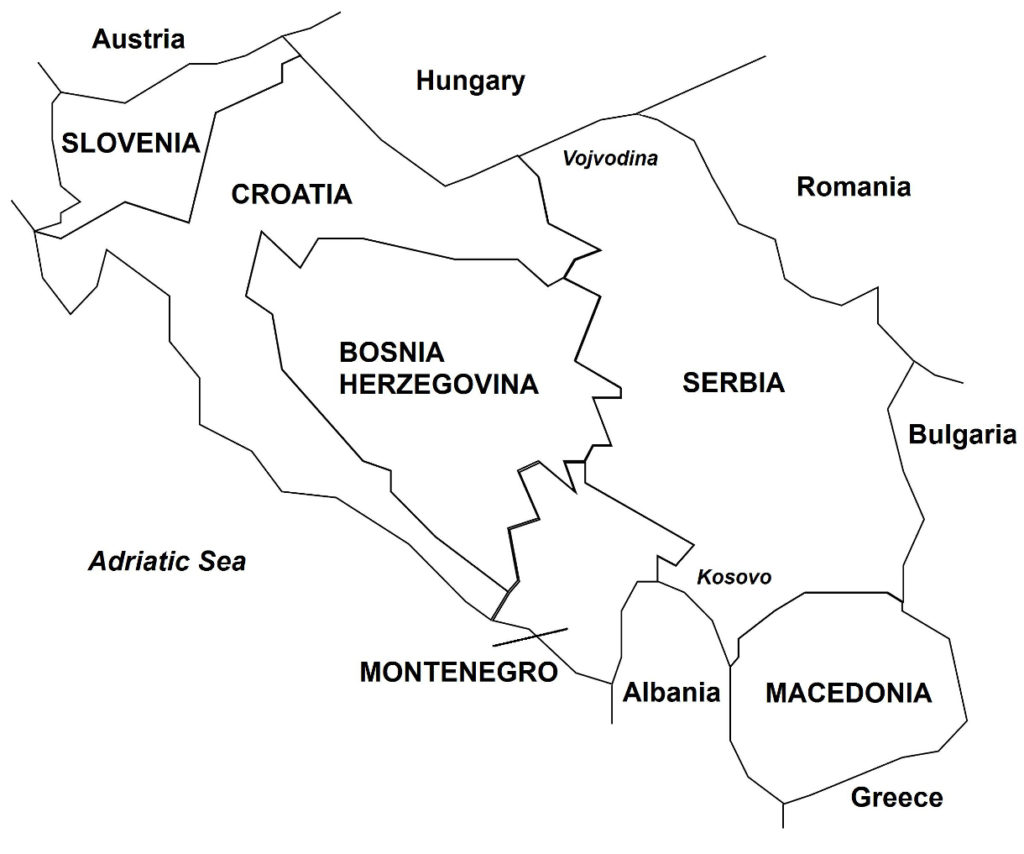On October 26, 1991, the last Yugoslav Army units departed from Slovenia following the end of the three-month Brioni Peace Agreement. Slovenia (and neighboring Croatia) had declared independence from Yugoslavia on June 25, 1991, which led to the outbreak of their independence wars. A ceasefire was declared on July 3. Then in the Brioni Peace Agreement brokered by the European Community and signed on July 7, 1991, Slovenia (and Croatia) agreed to defer their independences for three months. In return, Yugoslavia would cease all military operations in Slovenia and Croatia.
The peace agreement assured Slovenia’s independence, as the Yugoslav Army, in the following months, shifted its attention to the independence wars in Croatia, and later, Bosnia-Herzegovina, both of which contained large Serbian populations. The last Yugoslav Army units departed from Slovenia on October 26, 1991.
Slovenia soon consolidated its sovereignty by implementing major economic programs, which gained international approval. In January 1992, Slovenia’s independence was recognized by the European Community; in May of that year, Slovenia joined the United Nations.
Compared to the other Yugoslav Wars that followed shortly, the Slovenian War of Independence was much less severe in terms of casualties, atrocities, financial cost, and material damage. When viewed on a regional scale where other East European countries and the Soviet Union’s constituent republics were moving away from communism and becoming independent states, Yugoslavia was faced with an awkward position with regards to its seceding republics.
Yugoslavia’s decision to disengage in Slovenia was less difficult, however, in part because of Slovenia’s near ethnic homogeneity compared to, say, Croatia and Bosnia-Herzegovina, which had greater populations of ethnic Serbs. Another aspect of the Slovenia’s independence war was the Slovenian government’s meticulously planned media strategy aimed at generating broad international sympathy and support. As a result, the European Community exerted diplomatic pressure on Yugoslavia to end the war quickly.

(Taken from Slovenian War of Independence – Wars of the 20th Century – Volume 2)
Background The Slovenian War of Independence was the first in a series of wars during the period of the breakup of Yugoslavia (previous article), when Yugoslav constituent republics seceded and became independent countries.Geographically, Slovenia was the most westerly located republic of Yugoslavia, and had through the centuries, assimilated many Western European influences from neighboring Italy and Austria into its Slavic culture. And unlike the other Yugoslav republics, Slovenia was nearly ethnically homogeneous, with Slovenes comprising 90% of the population.
As communist ideology tottered in the Soviet Union and Central and Eastern Europe during the second half of the 1980s, Yugoslavia’s apparent Slavic unity began to fragment as nationalistic and democratic ideas seeped into its many ethnic groups. Economic factors also played into the independence aspirations in Slovenia and Croatia, the two most prosperous Yugoslav republics that contributed a fairly large share to the national economy and also subsidized the less affluent regions of the country. In the late 1980s, the constituent assemblies of the Yugoslav republics called on the national government to decentralize and allow greater regional autonomy.
In September 1989, Slovenia’s regional government took the radical step of abolishing communism and adopting democracy as its official ideology. Then in January 1990, delegates of Slovenia and Croatia walked out of an assembly of Yugoslav communists over a disagreement with Serbian representatives regarding the future direction of the national government. From this moment on, Yugoslav unity was shattered and the end of Yugoslavia became imminent. A pro-independence coalition government was established in Slovenia following democratic, multi-party elections in March 1990. Then in a general referendum held nine months later, 88% of Slovenes voted for independence. On June 25, 1991, Slovenia (together with Croatia) declared independence.
Because of the high probability that the Yugoslav Army would oppose the secession, the Slovenian government prepared contingency plans many months before declaring independence. For instance, Slovenia formed a small regular army from its police and local defense units. Weapons and ammunitions stockpiles in Slovenia were seized; these were augmented with arms purchases from foreign sources.
Nevertheless, at the start of the war, Slovenia’s war arsenal consisted mainly of infantry weapons, bolstered somewhat with a small number of portable anti-tank and anti-aircraft guns. Slovenia had no artillery pieces, battle tanks, or warplanes. And because the Yugoslav Army, the fourth largest in Europe, would be overwhelming in battle, the Slovenians worked out in great detail a strategy for guerilla action.
When Slovenia declared independence on June 25, this was one day earlier than its previous announced date of June 26. This was done to mislead the Yugoslav Army, which was prepared to attack on June 26.
Immediately after declaring independence, Slovenian forces took control of the airport near Ljubljana, Slovenia’s capital, and the border crossings with Austria, Hungary, Italy, and Croatia. No opposition was encountered in these operations because the personnel manning these stations were Slovenes, who in fact, promptly joined the ranks of the Slovenian Army.
Meanwhile, in Belgrade (in Serbia), the Yugoslav Armed Forces high command ordered limited military action in Slovenia in the belief that small-scale intervention would encounter little or no resistance. And since the Yugoslav Army did not commit significant forces in Slovenia, the resulting Slovenian War of Independence was brief (lasting only ten days, therefore its more common name, “The Ten-Day War”), and consisted of skirmishes and small-scale battles.
